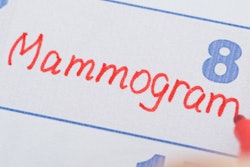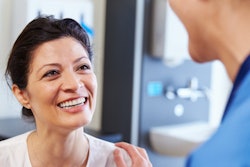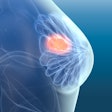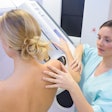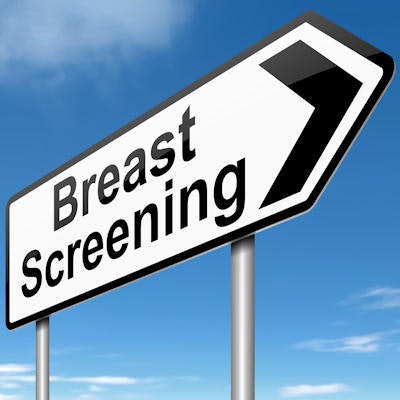
Screening mammography can save lives but also lead to harms such as false positives and overdiagnosis: As a result, women -- especially those ages 40 to 49 -- need help to evaluate the test's benefits in relation to those harms, according to a review published May 1 in the Journal of the American Medical Association.
It's not that younger women shouldn't get mammography screening, corresponding author Dr. Nancy Keating of Brigham and Women's Hospital told AuntMinnie.com. Rather, they should have the opportunity to truly understand the pros and cons of screening in order to make the best decision.
"There are women [under 50] who should [get a mammogram] due to their risk level or because of their values and preferences," said Keating, a primary care physician at Brigham and Women's and a professor of healthcare policy and medicine at Harvard Medical School. "But we need to dispel the idea that screening mammography will automatically save your life. For women under 50, the benefits aren't zero, but they are small, and the harms are real."
Handling harms
In 2009, the U.S. Preventive Services Task Force (USPSTF) revised its previous recommendation that women receive annual mammograms starting at age 40, instead recommending biennial exams for women between 50 and 74 years of age. The task force reiterated this guideline in 2012 and 2016.
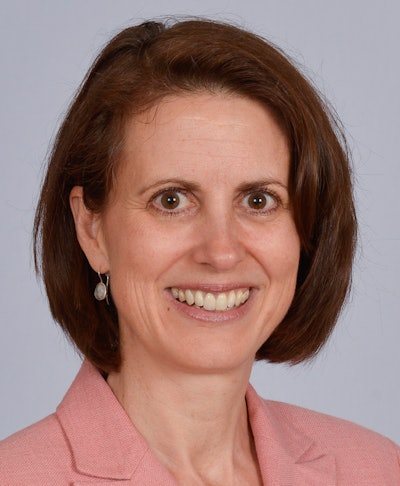 Dr. Nancy Keating of Brigham and Women's Hospital.
Dr. Nancy Keating of Brigham and Women's Hospital.But research has shown little change in U.S. screening practice: Primary care physicians continue to recommend screening to women in their 40s and women continue to undergo it, wrote Keating and colleague Dr. Lydia Pace, also of Brigham and Women's Hospital. Why? Perhaps it is because physicians disagree with the guidelines and reject the idea that the harms of screening mammography in younger women outweigh its benefits, or that physicians overestimate the benefits of screening mammography for preventing deaths from breast cancer. Or it could be that physicians have trouble making time to discuss the issue with their patients, according to the authors (JAMA, May 1, 2018, Vol. 319:17, pp. 1814-1815).
"[The] most important contributor to limited uptake of these guidelines may be the challenge clinicians have in truly engaging patients in shared decision-making to individualize screening decisions," Keating and Pace wrote.
Screening mammography does reduce deaths from breast cancer. But decreasing the number of breast cancer deaths can't be the only criterion for a successful screening program, especially when the absolute number of deaths prevented is small, according to the authors.
"We've convinced women that all they have to do is have a mammogram, and they won't die of breast cancer," Keating told AuntMinnie.com. "But the vast majority of women diagnosed with breast cancer do well whether they were diagnosed with mammography or not, because the disease is highly treatable."
The likelihood that a woman of average breast cancer risk will experience harm from mammography screening is consistently higher than the likelihood that she will benefit, especially for a woman between the ages of 40 and 49, according to the authors.
| Estimates of mammography's benefits, harms for 10,000 women screening yearly for 10 years | |||
| Age 40 | Age 50 | Age 60 | |
| Diagnosed with invasive breast cancer | 147 | 231 | 345 |
| Breast cancer deaths | 32 | 62 | 88 |
| Deaths averted because of mammogram | 3 | 10 | 43 |
| False positives | 6,130 | 6,130 | 4,970 |
| Unnecessary biopsy | 700 | 940 | 980 |
| Overdiagnosed | 28 | 44 | 66 |
"The benefit of screening is a small absolute decrease in the number of women likely to die of breast cancer," Keating and Pace wrote.
Worth noting, however, is that the researchers based the above data on sources that not everyone agrees are reliable, including a 2015 study conducted by Dr. Gilbert Welch of Dartmouth College and published in JAMA Internal Medicine; a 2012 study conducted by the United Kingdom Independent Panel and published in the Lancet; and a 2011 study conducted by Rebecca Hubbard, PhD, of the Group Health Research Institute in Seattle and published in the Annals of Internal Medicine.
Decision tools
Patients are capable of weighing the benefits and harms of screening mammography, and they should be supported to do so, according to the authors. But a true shared decision-making process can be time-consuming for primary care physicians and requires them to keep estimates of the benefits and harms of the exam readily available, Keating and Pace wrote. What's needed is expanded access to decision tools that patients could use at home or in the waiting room.
"When women use these decision tools, there's evidence that their knowledge about mammography screening increases," Keating said. "It's not that it goes from 80% of women saying they want mammography screening to zero, but more like 80% to 60%. Some women find the explanation of mammography's harms compelling."
Keating and Pace created a list of tools to facilitate discussions between patients and their physicians about screening mammography, including the following:
- The University of Wisconsin's HealthDecision tool for mammography
- The Harding Center for Risk Literacy fact box
- The Australian screening mammography decision aid
- The Weill Cornell Medical College mammogram decision aid for women ages 40 to 49
- Harvard Medical School's "Mammography: How to Make the Right Decision for You" video
- Kaiser Health News Lazris-Rifkin breast cancer risk-benefit characterization
The researchers hope that practices can use electronic medical record portals or provide information sheets for patients so that when patients and physicians do meet during an appointment, they'll have something to work with, Keating said.
"It is no longer appropriate to apply a single recommendation across women of all ages and risk profiles, nor should clinicians make these decisions for patients," they wrote. "Tools to support shared decision-making about breast cancer screening are increasingly available, and investigators, clinicians, healthcare organizations, and insurers must now determine how to implement these discussions in practice."





